The Gone Sounds of Jazz with Sid Gribetz
An archive of jazz radio programs focused on intensive in-depth looks at great themes from jazz history. Winner of the Jazz Journalist Association Award for Career Excellence, Sid has been broadcasting for over 40 years on WKCR-FM, NYC. He was also voted ’Best Jazz DJ’ by the Village Voice in its 2008 Best Of NY Issue.
Episodes
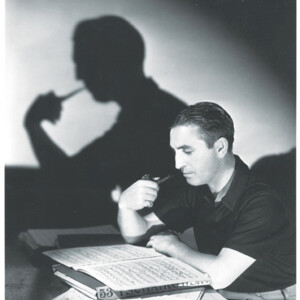
Thursday Jul 04, 2024
Harry Warren
Thursday Jul 04, 2024
Thursday Jul 04, 2024
The popular standards of the Great American Songbook provide the foundational material for the musical improvisations of the jazz repertory. This program is one of an occasional series we’ve produced focusing on the legendary composers and their jazz interpretations. Born in New York to Italian immigrant parents in 1893 as Salvatore Guaragna, Harry Warren was a self-taught musician who dropped out of high school to begin performing in the entertainment field. After stateside service in the Navy during World War I, Warren worked for Vitagraph Films in Brooklyn, and then as a song plugger for publishers and a composer for the stage in Manhattan in the 1920's. With the advent of sound pictures, Warren was among the first songwriters to take up residence in Hollywood and compose for the film studios and their classic musicals. Beginning with “42nd Street”, Warren provided the music for the Warner Brothers Busby Berkeley productions of the 1930's, and then movie projects of 20th Century Fox, MGM and other studios in the 40's and 50's. Among his famous, enduring, compositions are There Will Never Be Another You, The More I See You, You’re Getting To Be A Habit With Me, Serenade In Blue, I Only Have Eyes For You, At Last, Jeepers Creepers, Lullaby Of Broadway, September In The Rain, Chattanooga Choo Choo and many more. The program will put these songs in perspective and play jazz versions with swinging improvisations by instrumentalists ranging from Lester Young and Sonny Rollins to Miles Davis and Eddie Lockjaw Davis, among others, as well as vocalists such as Louis Armstrong, Billie Holiday, Johnny Hartman, Etta Jones and Etta James. And maybe we’ll throw in The Flamingos, too.
originally broadcast in 2017
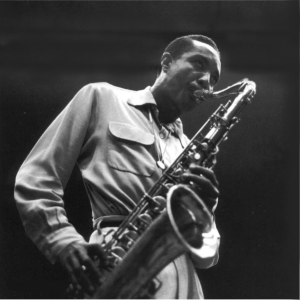
Thursday Jul 04, 2024
Harold Land
Thursday Jul 04, 2024
Thursday Jul 04, 2024
Land was best known as the tenor saxophonist in the original Clifford Brown-Max Roach Quintet. But his prolific and accomplished career lasted more than four decades thereafter, although never gaining the more widespread fame that he deserved. Land possessed a firm sound and ingenious creativity on his saxophone and also was an inventive composer.Harold Land was born in Houston, Texas in 1928, and his family moved eventually to San Diego, where he was raised. As a young man, Land settled in Los Angeles, and he remained a Californian for the rest of his life.When Max Roach was forming what would be his famous group with Clifford Brown, they auditioned several for the saxophone chair, before becoming enamored hearing Harold Land in a jam session at Eric Dolphy’s home. Land was a key member of the group during its first two years, 1954 and 1955. With the demanding national touring, missing his home and his family, and needing to care for an ailing relative, Land left the group and returned to LA. (He was replaced by Sonny Rollins, which unfairly overshadowed the critical acclaim and recognition that Land’s historic contributions to the group should have commanded).Once he got settled again, Land became an important figure in the Los Angeles music scene. In the late 1950'’s he recorded his own albums for Contemporary and other labels, guested with Wes Montgomery and Monk, had a working group with Curtis Counce and also Hampton Hawes and Elmo Hope as associates.Ongoing in his career he worked frequently in Gerald Wilson’s bands and recordings and other West Coast activities, such as with Carmell Jones. In the late 1960's Land had a provocative working collaboration with vibraphonist Bobby Hutcherson. Later he co-led a group with Blue Mitchell, and also played with the “Timeless All Stars” including Hutcherson and other confreres like Curtis Fuller, Cedar Walton, Buster Williams and Billy Higgins. Land taught in the fine jazz program at UCLA. He died of a stroke in 2001 at the age of 72.
originally broadcast on June 23, 2024
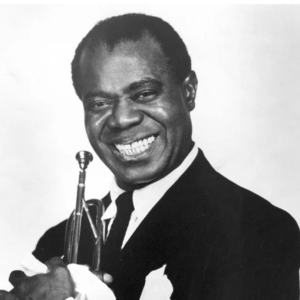
Thursday Jul 04, 2024
Louis Armstrong 1
Thursday Jul 04, 2024
Thursday Jul 04, 2024
WKCR presents annual marathon tributes to Louis Armstrong on the 4th of July. Here’s my segment from the 2023 broadcast, which, in addition to a potpourri of some Satchmo goodies also includes a lengthy set of a mix of his 1957 Verve recordings with Oscar Peterson, Ella Fitzgerald, and the Russ Garcia orchestra
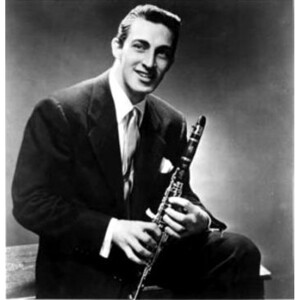
Wednesday Jul 03, 2024
Buddy DeFranco
Wednesday Jul 03, 2024
Wednesday Jul 03, 2024
Buddy DeFranco was one of the greats among the clarinet players in modern jazz. He possessed a cerebral sophistication and intelligence, which, together with his masterful facility and command of the instrument and great sense of swing, made him one of our jazz giants. His tone on the clarinet was always warm, woody, and welcoming.Boniface “Buddy” DeFranco was born on February 17, 1923 to a poor Italian-American immigrant family in Camden, New Jersey. His father, an amateur guitarist, was blind, and earned his living as a piano tuner. DeFranco was raised in South Philadelphia and attended the legendary vocational Mastbaum music school for formal musical studies. It also being the Swing Era, teenage Buddy came under the sway of Benny Goodman and Artie Shaw. He began playing professionally in 1939.DeFranco excelled right off the bat playing in the big bands of Charlie Barnet, Tommy Dorsey (think of the force of his clarinet on “Opus No. 1") and Gene Krupa.As bebop took sway, Buddy’s playing was influenced by the artistry of Charlie Parker. DeFranco played in the Bebop style and made progressive recordings with his own bands and those of Boyd Raeburn, among others.DeFranco’s career took another turn, when Count Basie pared down his Big Band and formed his famous Octet in 1950 and 51, DeFranco’s clarinet was a key component. DeFranco always credits Basie for informing him with a relaxed sense of swingFrom 1952-1955, DeFranco formed his own working modern jazz quartet, with first Kenny Drew and then Sonny Clark on piano, and Art Blakey and later Bobby White on drums. This organization toured the country regularly and made many recordings. Blakey was a major influence, too, infusing power and drive into DeFranco’s conception.DeFranco’s career was multifaceted, taking many turns and continuing for decades more. He made many “mainstream” records for Norman Granz and Verve; he lived in California for a while playing in Nelson Riddle’s orchestra which backed Frank Sinatra and scored many TV programs like Route 66; in the early ‘60's he had a regular working quartet with accordionist Tommy Gumina (it’s not what you think!). In later years DeFranco settled in Panama City, Florida. From that base he toured the world both as a concert performer and as a clinician teaching a new generation . He had an ongoing association with vibraphonist Terry Gibbs, often making many swinging night club performances and albums during his later years.Buddy was active well into his eighties, and made his final recordings with Mat Domber’s Arbors label. DeFranco died at the age of 91 in 2014.
originally broadcast February 19, 2023
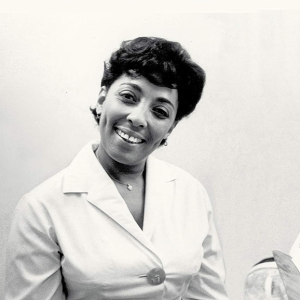
Wednesday Jul 03, 2024
Carmen McRae
Wednesday Jul 03, 2024
Wednesday Jul 03, 2024
Carmen McRae should be high on the list in the discussion of the all time great jazz vocalists. She sang with special concern for the lyrics and performed with pronounced clarity and vision, enhancing the meanings of the songs. Additionally, McRae had a husky, soulful timbre, another factor that intensified her emotional connections with the listener. She was an excellent pianist as well, and her musicality informed her artistic grace and command.
Carmen McRae was born in a middle class Jamaican immigrant African American family in Harlem on April 8, 1920, and she was raised in Brooklyn. Her family had high expectations and provided classical piano lessons (although Carmen remembers hiding sheet music of popular songs amongst the scores in her piano bench).
Carmen’s first influence was Billie Holiday. After performing as a teenager in an amateur show at the Apollo Theater, Carmen met composer Irene Kitchings, who was married to Teddy Wilson. Kitchings introduced Carmen to Billie and encouraged Carmen to write songs. Carmen wrote “Dream Of Life”, which was recorded by Holiday.
Respecting her parents wishes at first, Carmen became an office worker doing clerical jobs, but she began performing in night clubs in the evening. Eventually her musical career led her to the band of Duke Ellington’s son Mercer in the late 1940's. After leaving Ellington, McRae settled in Chicago, where a 17 week engagement became 3 and ½ years as an active pianist and singer in the Chicago jazz world, experience which honed her craft.
McRae returned to New York in the 1950's and continued her growth working regularly at Minton’s. Her career flowered with a contract with major label Decca and a series of enduring recordings of great American songs with leading jazz artists. With Columbia Records in 1961 she made a mark with her tribute album to Billie Holiday.
Later in the 1960's McRae moved to Southern California. At this time she also began gracing her performances with interpretations of contemporary pop songs. As her career moved on Carmen became a popular and prolific attraction singing around the world. In the 1980's she made well received albums for the Concord label. Carmen capped her career with her tour de force presentation of lyrical interpretations of Thelonious Monk tunes (who else could have done this?).
McRae suffered from respiratory disease in 1991 after which she curtailed her performing. In 1994 she was awarded the prestigious National Endowment for the Arts Jazz Master Award. Sadly, she passed away on November 10, 1994 at the age of 74.
Originally broadcast June 25, 2023
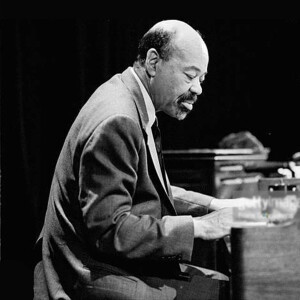
Monday Jul 01, 2024
Melvin Rhyne
Monday Jul 01, 2024
Monday Jul 01, 2024
Melvin Rhyne is one the greats from the 1950s heyday of the jazz organ, but he is not so widely remembered today. He should be.
Born October 12, 1936 in Indianapolis, he attended the segregated Crispus Attucks High School, which had a legendary music program and nurtured many jazz greats who came of age when Indianapolis had a thriving jazz scene. Rhyne originally played piano, notably backing Rahsaan Roland Kirk.
When Jimmy Smith and other pioneering giants made the Hammond organ a popular jazz instrument, Rhyne picked it up, but he maintained his pianist roots in his approach to the heftier organ sound.
Rhyne’s major acclaim was as the organist in the legendary guitarist Wes Montgomery’s original trio. Beginning in the local Missile Room nightclub in Indianapolis, Wes’s trio became an international sensation and produced a series of records on the Riverside label that are jazz classics – Jingles, Missile Blues, Fried Pies, Movin’ Along, Portrait of Wes, Boss Guitar, and more.
Moving on from Wes in the late 1960's, Rhyne began his own career quietly in the Midwest. He eventually settled in Milwaukee, Wisconsin where he was a leader of the local jazz community as a performer, teacher and mentor.
Starting in the 1990's, Rhyne made more touring concert appearances and a series of well-received recordings, mainly on the Criss Cross label. These efforts regained national, and even worldwide, attention. In this vein, Rhyne would lead his own bands, some in the organ-guitar-drums trio format, and some with younger generation horn players added to the combo.
Rhyne’s organ style didn’t dive deeply into the frantic, hard charging grooves of the B-3. And he didn’t “pull out all the stops”. Instead, he played crisp clear lines, could swing in the pocket, and achieved his orchestral backing from his sophisticated manipulation of the keyboard. While he could, and did, play the soul and funk of the organ sound, his preferred attack included the more complex textures of modern jazz piano, translated to the organ timbres.
Mel Rhyne died in 2013 at the age of 76. Our program will explore the classic records with Wes Montgomery and many delights from his later recordings.
Originally broadcast May 14, 2023
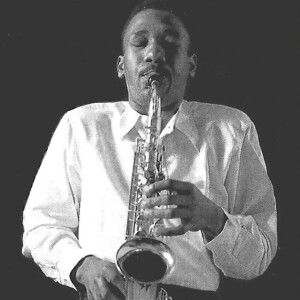
Monday Jul 01, 2024
Ernie Henry
Monday Jul 01, 2024
Monday Jul 01, 2024
Not well known even in his brief lifetime, Ernie Henry was an astonishing musician of grace, style and profound emotion. Henry came up in the bebop days and was a key member of Dizzy Gillespie's 1948-9 big band, and he also participated in the more lyrical side of bebop with Tadd Dameron, Fats Navarro, Howard McGhee, and Walter "Gil" Fuller.He spent the early fifties with his native Brooklyn beboppers, and as he turned 30 in 1956 he emerged full force on the scene, appearing on Thelonious Monk's “Brilliant Corners”, in Dizzy's famous 1956-7 edition of his big band, and in several virtuoso recordings as a leader on Riverside that seemed primed to send him to future stardom. Unfortunately, he died in his sleep from various ailments on December 29, 1957 at the age of 31.
Originally broadcast October 22, 2023
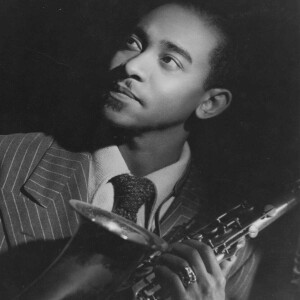
Monday Jul 01, 2024
Don Byas
Monday Jul 01, 2024
Monday Jul 01, 2024
A prolific and influential figure on the national jazz scene during the World War Two years, Byas moved to Europe in 1946 and remained an expatriate for the rest of his life. While he achieved some celebrity on the continent, sadly his absence from the US has left him a somewhat forgotten figure in our music here.Carlos Wesley Byas was born on October 21, 1913 in Muskogee, Oklahoma. His paternal grandfather was a blacksmith, and his father a jeweler. His maternal grandfather was a reverend and real estate investor and scion of an educated family. Young Byas lived a middle class life and attended HBCU Langston University. There was always music in the house, and Carlos played several instruments before settling on the saxophone.As a teenager, he was already playing professionally, and he teamed often with his fellow Muskogee friend Jay McShann. They played in various “territory bands” around the Southwest. While in college, Byas led a band calling himself “Don Carlos and his Collegiate Ramblers”, and the moniker Don stuck. Byas went to Los Angeles in his early twenties, played with major bands there, and struck up a friendship with Art Tatum. Eventually he moved to New York City in 1939, and became a fixture in the vital scene here.Major highlights of his career include a stint with Andy Kirk and a relationship with Mary Lou Williams; being hired by Count Basie from 1941-43 to replace Lester Young when Prez left; participating in the revolutionary jam session scene at Minton’s; performing with all the greats such as Coleman Hawkins and Dizzy Gillespie and influencing a young Charlie Parker (Byas participated in many of the seminal bebop recordings); and an amazingly fertile output leading dozens of record dates and appearances on 52nd Street New York clubs from 1944-1946. Then he left it behind to take up residence overseas.Byas had a productive career in Europe settling first in Paris and then in Amsterdam and raised a family there. He died of cancer in 1972 at the age of 59.Byas had an inventive harmonic sense stemming from the lessons absorbed from Tatum and a powerful, roaring attack to go with it. At the same time he possessed an absolutely luscious tone and was a ballad master. The bluesy southwestern swing background also informed his playing with a tasty, down to earth flavor. While he came up together with the beboppers he can’t be said to be one, yet integrated their ideas as well.Other saxophonists from Bird to Johnny Griffin to Sonny Stitt have said that he was the best. Hear for yourself and see if they’re right.
Initially broadcast January 14, 2024
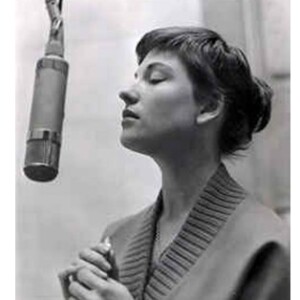
Friday Jun 28, 2024
Beverly Kenney
Friday Jun 28, 2024
Friday Jun 28, 2024
Vocalist Beverly Kenney is one of the hidden gems in the treasured vaults of the jazz vocal legacy. She lived a short life and is not well-remembered, but for those who knew her, musician and audience alike, the impact was lasting.Like a “cool school” saxophonist, Kenney sang with a laid-back detachment that on its surface presented a seemingly distanced and indifferent affect, yet her form possessed an inner reality intensely connected to the lyrics of the song and the deep emotions of artistic expression. In a gentle way she swung in the pocket and took sly liberties with her phrasing that exemplify the best in jazz. Her repertoire was vast, and Kenney sang both the great standards and many lesser known items from the great American songwriters.Beverly Kenney was born in a working class family in New Jersey January 29, 1932 but left home early to follow her muse. Kenney began her career in earnest singing in fancy Miami nightclubs as a 22 year old in 1954. In 1955 she toured with the Dorsey Brothers orchestra as its vocal stylist. Beverly left the Dorseys and returned to New York to participate in the jazz and beatnik culture scene and befriend its writers, actors and musicians. She sang in gigs with many jazz greats, had several featured appearances at Birdland, and was well enough known to be included in the all star gala “Jazz For Israel” concert at Carnegie Hall October 15, 1955.*
Starting in 1956, Kenney recorded six albums (three for the Roost label, and then three for major Decca) accompanied by Basie-ites Joe Newman and Frank Wess, guitar master Johnny Smith, Charlie Shavers, pianist Ellis Larkins, and studio orchestras and big bands.During these late 1950's years she worked occasionally at major venues around the country, appeared together as part of Lester Young’s group in a Birdland engagement, and performed on national television and radio shows.Kenney’s talents were quickly recognized by the critics, and she was championed by Barry Ulanov, Nat Hentoff, William B. Williams and Steve Allen.However, Beverly Kenney apparently was a melancholy and troubled soul. It ended tragically when she committed suicide in April 1960 at the age of 28. A promising career was cut short.
Yet, many insiders and vocalists from the era long remember her and often comment on her unique talents.Her small surviving oeuvre (the six LPs, esoteric and out of print except in obscure foreign re-issues, plus some even rarer odds and ends) will barely fit into the three hour program.
Initially broadcast 2020

